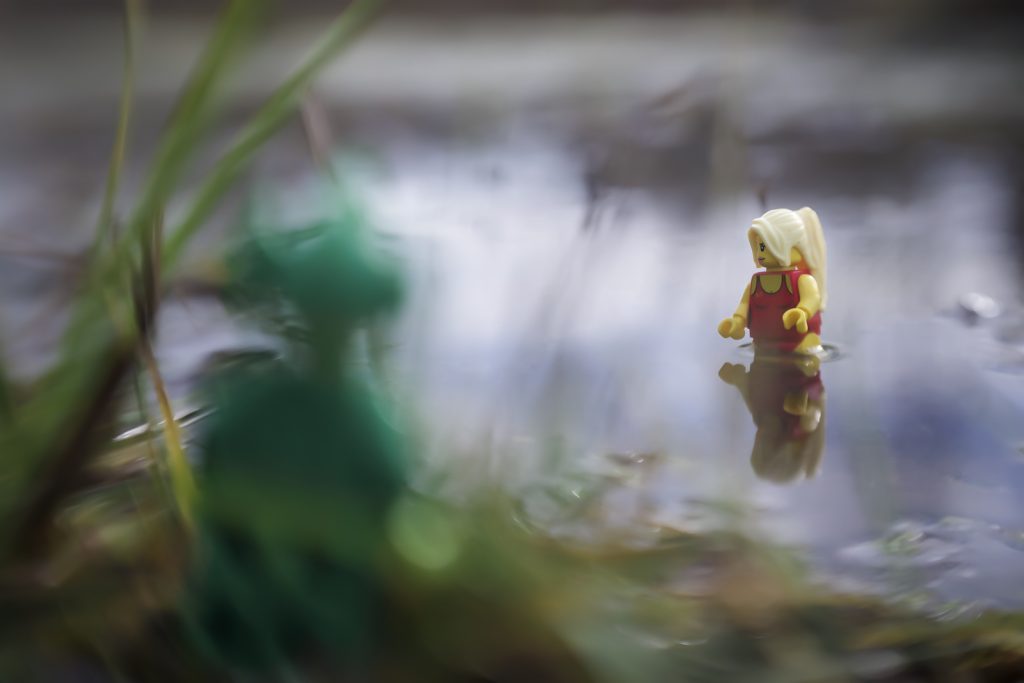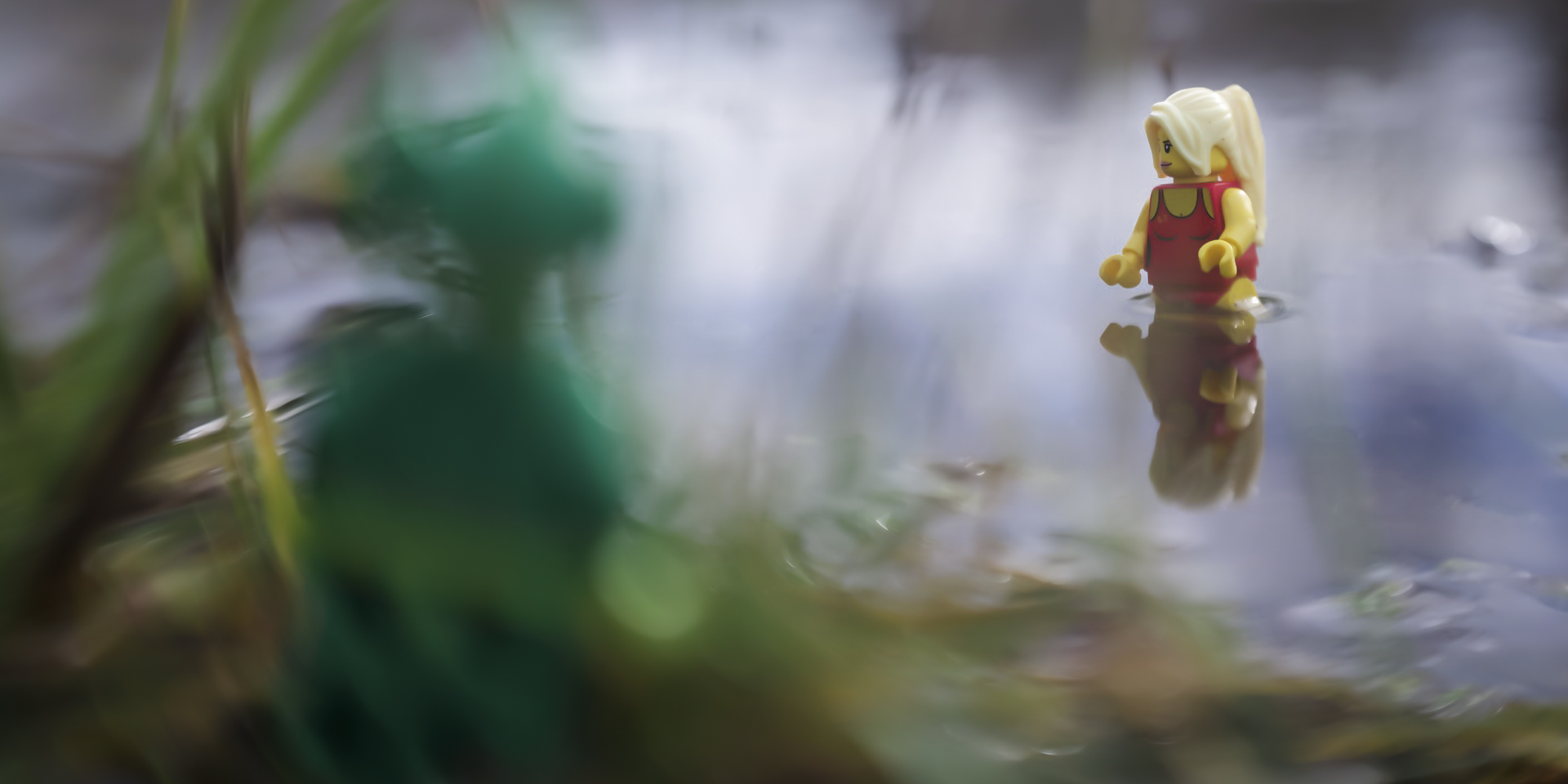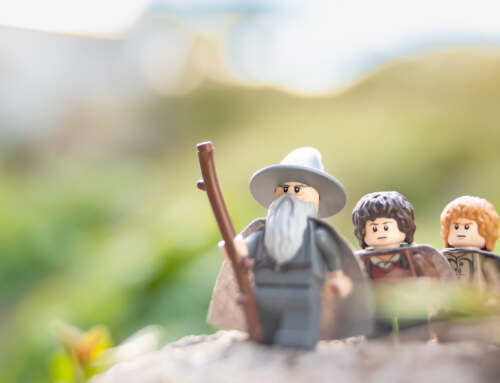The Photographers Vision: understanding and appreciating great photography, is a comprehensive overview of photography by Michael Freeman. If you’re interested in studying what makes a great photograph this is a wonderful place to start.
But I’m just a toy photographer!
I’m can hear you say : “But I’m just a toy photographer; I’m only doing this for fun!” I understand your point, but I would counter that you should always do your best. Even if it’s your hobby and a stress reducer, there’s no reason why you shouldn’t be pushing yourself to understand your craft.
By reading Freeman’s book you will get an excellent introduction on to how to look at photographs. When you really understand what you’re seeing, you have a better idea how to judge what you’re looking at. Freeman’s book begins with an overview of the foundations of photography. He takes us to the very beginning by asking the seemingly obvious: what is…or isn’t a photograph? When you know what you’re looking at, you can look at photographs critically. Not just other peoples photos, but also your own.
I really enjoyed his ‘start at the beginning’ approach. If you know what the six qualities that make a good photo, you have the foundations for examining your work and the work of others. You also have the tools to make your work the best it can be.
Qualities of a good photo
Here is a quick run down of the six qualities that make a good photo.
- Is the photo skillfully put together? Does the photographer have a grasp of the basics of photography and utilize them to capture his or her vision?
2 Does the photo provoke a reaction in you? When you look at a photo do you feel an emotion? Do you feel a connection to the image?
3 Does the photo offer you more than one layer of experience? Can it be read not only as the image is intended, but can it also be seen as an allegory, or relate in some way to a larger idea?
4 Does the photograph have its context in photography? Does the photographer understand how his or her images relate to the photography that has preceded it as well as work that is being created around it?
5 Does the photograph contain an idea? What idea is the photographer trying to convey?
6 The photograph doesn’t imitate. While the photographer may be aware of similar work, he or she doesn’t imitate or copy other work. The photographer is creating work that is original and true to their own vision.
How to read a photo
The six qualities that make up a good photo are only the beginning of the process of evaluating a photograph. Freeman then poses 10 questions to ask yourself when reading photographs. These questions range from paying attention to your first impressions to asking yourself if the image works. I think its hard to evaluate whether a photo is successful. But when you break down this large and unwieldy question into ten smaller questions, it becomes easier to see why a photo is successful.
This surprisingly straightforward process gives you a concrete basis of evaluating photographs. Rather than thinking with your gut, or intuition, you can identify with confidence your opinion on your own work as well as on the work of others. By following a specific process for reading a photo you can take the emotional reaction out and look at a photo and judge it on its merits, not on personal taste.
We all want to be better photographers (otherwise you probably wouldn’t be reading this blog!). By developing a few basic skills, like how to read a photo, you can improve your photos and understand where there’s room for improvement. Within The Photographers Vision there are many examples of amazing photos that you can practice asking questions on.
Understanding purpose
Even if you’re taking photos of toys, it’s good to know what your goals are. Why are you taking photos? How will you use your photos? Who is your audience? The Photographers Vision takes a deep dive into the purpose of many famous photos. By asking these seemingly basic questions, so much can be learned about the work of other photographers as well as our own motivations. I like how Freeman uses some of the most amazing photos every published to illustrate his concepts. Each photo has a detailed caption to explain exactly how that photo illustrates a specific concept. Not only do you get a wonderful historical overview of amazing photos – but he also explains why they’ve been so influential.
I really enjoyed how Freeman broke down the different genres of photography into easy to understand concepts. Genres like: landscape, architecture, photojournalism and sport. Each genre is defined by its major attributes as well how it fits into the larger world of photography. He also asks: what is the photograph for? Creating work for the single print requires a different kind of mind set from creating work for a photo essay. Freeman lays out the differences in an easy to read and understandable language.
When I was finished with The Photographers Vision I had a better understanding of the difference between a Photo Essay and a Single Published Image. I also felt a twinge of nostalgia for the days when glossy magazines threw around money like it was candy to photographers. When color printing was new and far off places were glamorous simply for their novelty.
If you’re not used to thinking about the “Why?” of photography The Photographers Vision is a great place to start.

My attempt at creating an image with both drama and depth by focusing on the figure in the background. I intentionally wanted the foreground figure to be mysterious and a little menacing.
Photography skills
Freeman devotes the last third of The Photographers Vision to writing about specific photograph skills. If you’re looking for specific camera and photography skills you won’t find them here. This section focuses on the intangible aspects of photography. With subject headings like “holding back”, “perfect imperfect” and “assertive subject” you know that Freeman is talking about the intangibles of photography, rather than specific skills.
For example, his section on lighting is only a few short paragraphs long. Most photographers already know that lighting can make or break a photo so Freeman doesn’t waist time telling you how to capture light. He encourages the reader to think about lighting in creative ways through his words and several photographic examples. How you light you’re subject doesn’t have to be an after thought. It can be the main device driving the purpose of your photo.
This book really helped me to examine my photos with new insight. Not only do I want to tell compelling stories, but I want to tell these stories in visually interesting ways.

I have a hard time embracing a blurry subject. Many of the examples I’m drawn to in the The Photographers Vision use blur to great effect. On first look at this image I rejected it for its blurry nature. I decided to use it anyway because I think there is something special about the water and the blur of the figure that conveys a wonderful sense of motion and life I might not get with an image that was perfectly focused.
Conclusion
If you enjoy thinking about photos I know you will enjoy this book as much as I did. If you don’t know where to begin when looking critically at photographs, The Photographers Vision is a great place to start.
Even after nearly 30 years as a photographer I enjoyed this book immensely. If got me thinking about my work and how I can continue to push it to new levels. I may only be a toy photographer, but I want to be the best toy photographer I can be.
By understanding and appreciating great photography, maybe I can create great (toy) photography too!
Shelly
Now that I’ve finished Michael Freeman’s The Photographers Vision I’m looking for a new book to read. If you have any suggestions, feel free to leave them in the comments.
If you like what we’re doing we invite you to support the blog by purchasing our book that celebrates our first year as a blog: A Year in the Life of Toy Photographers, 2017. The book is available for purchase as either an eBook or as a physical copy. All money will go to support and grow the blog. You have until March 31st to grab your copy!







Hi Shelly. Thanks for keeping us (and me) thinking. I love that blurred shot btw. Beautiful! xo
Thank you Doug! What can I say, I like to think about photography. I think it makes me better at my craft. Plus this was such a great book for beginners and long time photographers alike! Happy reading and thinking!
‘Perfect imperfect’, what a great term. It reminds me of the wabi-sabi photo challenge Julie Blair tested us with on G+. Although I have not read the book, I love the idea of not getting hung up on technical perfection. This is possibly why I love the look of legacy lenses so much.
I know! Right?? “Perfect Imperfect” and “What is the surprise?” are my two new mantras. And one of these days I will start my collection of legacy lenses. Im sliding (happily) more and more in that direction.
This sounds like a very interesting read Shelly! I’m really interested in the idea of a blurry subject – I think my gymnasts would love that 🙂
Lynn
With such a title, I knew it would be hard to resist from ordering it on Amazon… It will take a month for the book to arrive but your post definitely makes me feel impatient to read it 🙂
Maelick Im glad you ordered the book. Crazy that it will take a month though! I know how much you like to think about photography and I believe this book will give you much to think about plus a wonderful historical perspective. Let me know what you think when you have a chance to process the information. 🙂
“But I’m just a toy photographer; I’m only doing this for fun!”
You are right that this should not be an excuse for mastering ones craft.
It is my contention that good toy photography is one of the hardest genres of photography to master. It has all the same problems, issues, challenges as most other forms of photography, except everything is at the macro scale. Not to mention the models often don’t pose the way we may envision. It becomes very hard to “sell the fake”. The only saving grace is that our models are not human, so directing someone is not an issue.
Everything else tho… mastery of the craft becomes very important.
This book sounds like a great summation of that.
I agree with what you say in a general sense. And not to take anything away from the challenges of mastering toy photography, because it is challenging, but having photographed weddings for 8 years I will say that mastering that is far more challenging – with actually a lot more issues and challenges than you’ll ever encounter with toy photography. And the stakes are much higher. In the span of one wedding you can encounter almost every conceivable type of lighting scenario – often within minutes of each other. From really dark churches that don’t allow flash, straight to bright, direct sunlight outside the church. Shooting in 100 degree weather in the summer, and freezing wet temps in the winter. Subjects that are in fast and constant motion, to shooting the first dance amid the DJ’s infuriating constantly changing LED colored lights. And then you throw in the normal stress of the day, clients running behind schedule, emotional brides losing it, drunk groom and groomsmen (all the time haha!), losing daylight for your family portraits, demanding Mothers of the brides, drunken guests, and so on. And your own stress knowing there are no do-overs with wedding photography, so don’t eff it up Mitch! By the end of a 12 hour day, having carried your big-a$$ camera and bag the entire time, you’d be physically and mentally drained. I enjoyed it while I was doing it, and have a lot of war stories, but I absolutely do not miss it! Give me toy photography any day! 🙂 Honestly, I don’t even think I ever ‘mastered’ weddings. But I was solid and would do a really good job for my clients. You can check out some of my ‘real people’ work from way-back-when on my ancient website http://www.mitchelwu.com. I actually plan to kill this old site soon as it serves no purpose.
Interesting points Mitch. Everything you say is absolutely true. I can only imagine the stresses imposed by fleeting nature of wedding photography. As you and I both realize there are many different types of photography. Editorial photography is inherently different from Product or Art photography. They each take a different skill set. What i liked about this book is it helps anyone (both beginner and professional) see how great photography is created, no matter what the genre. The books gives us a criteria to judge any photo by, no matter what genre it falls into. Not a bad skill set to have no matter what type of photographs you like to take.
Thanks as always for joining the conversation. 🙂
Thanks, Shelly. If I could have found a ‘delete’ button I probably would have deleted that post because I may have come off as arrogant, which wasn’t my intent. It’s just that I’ve obviously shot both toys and weddings and I find shooting toys to be a heck of a lot easier, for the reasons described. With that said, I definitely enjoyed shooting weddings and capturing my clients’ stories, which would then literally become a story book, AKA the wedding album. Once you understood the flow of the day, weddings got a lot easier. Then it was less of a scramble and more of an opportunity to create beautiful images. But the dynamics of each wedding were so different, you’d never shoot the same one twice. And then it’s always kind of cool to see my former clients, many who I’ve become friends with, having kids and going through those milestones, because I was there at the start of that journey for them.
Where I think toy photography can be uniquely challenging is in the storytelling area. I’m like a broken record on this issue. You can have the most amazing technique but if you’re not telling us anything with your images then you’re losing out on 90% of the impact. I’d much rather see an interesting story than jaw dropping explosions and crazy effects (although I can be guilty of doing that from time to time – sometimes you just want to blow stuff up!). A beginning toy photographer with limited skills can blow me away with an amazing story (or funny story or whatever). I’ll remember that image a lot longer than the thousandth polished image of a superhero walking through a snowy or explosiony environment.
And thanks for the heads up on The Photographer’s Vision. I will check it out! Feel a little guilty that it will only take me a couple of days to get it though! 😀
Thanks for your comment Dave. I think this is a great book for the beginning photographer. And lets face it, toy photography is dominated by people who are just learning the craft. I think that there is much to be learned by reading and thinking about photography. Almost as much as physically doing it. You’re right that toy photography has all the same issues and challenges of other genres. I think that this is why it is so hard to categorize what it is. I never really know what genre to put us in, because we borrow from so many. But what ever we decide to call it, its more fun when we push ourselves to be the best we can be. Carry on my friend!
Great Article Shelley… Some awesome points to think about:)
Thanks James! I appreciate the comment. I know that thinking about photography isn’t for everyone. But sometimes simply thinking about it will take you unexpected places. Cheers!
Another book for me to add to the list? I’ve only just started reading “Steal Like An Artist”! Which I am loving BTW. Thanks for that recommendation, and this one!